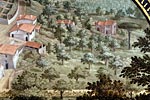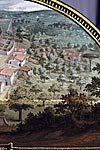Beginning at the end of the 15th century, the
historiography favorable to the Medici always presented
the Mugello as the great family’s place of origin. A
land where the numerous branches of the Medici clan had
concentrated their own economic interests since the
mid-13th century: a territorial supremacy conquered to
the detriment of the old feudal families of the
Apennine area, not by chance coinciding with the
Florentine Commune’s will to expand precisely into that
area, which up to then had been dominated by the
powerful noble factions that had controlled the transit
through the mountain crossings.

The exhibition is centered not so much on the
economic and artistic characteristics of the three
Medici country residences of Trebbio, Cafaggiolo and
Pratolino, but rather on their patrons and their
symbolic value. The first two, true fortress-villas
were variously owned by different branches of the
family, however ending up in the sphere of the great
figure of Cosimo the Elder (1389-1464). The third was
built at the behest of Francesco I (1541-1587), an
exorbitant affirmation of this restless grand duke’s
tastes and fantasies.
So a re-interpretation is offered of the Medici’s rural
roots in the Mugello, presented both as a symbol of the
proud austerity of customs and the desire to sometimes
get away from the Florentine political struggles
characterizing the 15th-century members of the family
as well as the wish for an intellectual and magnificent
isolation by the demanding son of Grand Duke Cosimo I.

And there was perhaps also another allusive
intention in this Medici return to their birthplace in
the country, that of celebrating the family’s ancient
origin, descended from the primordial nature of the
Mugello valley, previously mythically healed by them
through the killing, by their progenitor Averardo, “a
very valiant captain of Charlemagne himself”, of the
legendary “Cruel Giant Mugello who continuously
pestered it [the valley] with robberies and murders”
from where the red balls of the armorial bearings would
have derived, a memento of the iron balls of Mugello’s
mace, drenched with the victims’ blood, which had left
dents on the hero’s shield during the duel.
But also a physical descent as far as the city of
Florence where this time it would have been the entire
society of men to be healed by their political action.
A descending from that plain surrounded by high
mountains rich with bountiful waters, protectors of
both the city itself that was nourished by those waters
and of the same urban civilization which was purified
and protected by that rural maternal bulwark.


